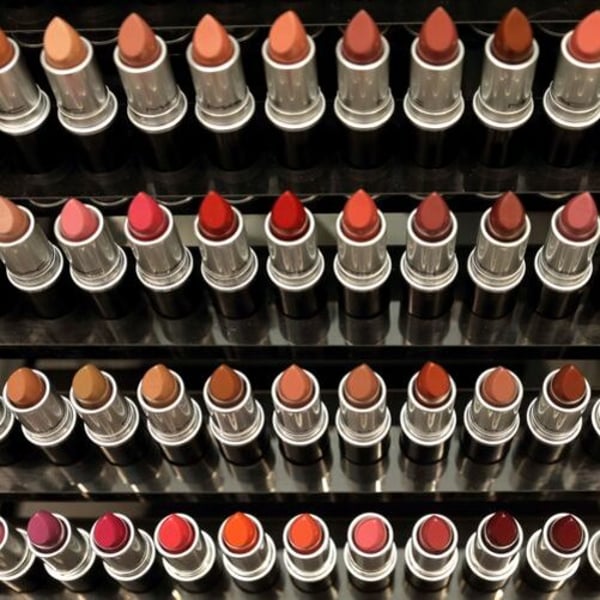
Estée Lauder CEO ‘not going anywhere’ despite 40% drop in shares
Last Updated on February 6, 2024 by Admin
[ad_1]
By
Bloomberg
Published
Feb 6, 2024
The CEO of Estée Lauder Cos. defended his tenure at the helm of the beauty company and said his turnaround plan is already on the way to recovering lost profitability and generating more buzz about its brands.

“I’m not going anywhere,” CEO Fabrizio Freda said in an interview with Bloomberg News. “I’m very committed to take this company through the recovery.”
Freda laid out the latest part of his strategy on Monday, announcing that Estée Lauder was cutting as many as 3,000 positions, or about 5% of its global staff, to trim costs and boost profit. Shares closed up 12% in New York, the most since August 2019.
But that didn’t quiet suggestions from some corners that perhaps another leader should execute the recovery plan. The company’s shares are down more than 40% over the past year.
“Should there be a refresh to the management team, we think investors could view the next chapter of growth in a better light,” HSBC analysts led by Erwan Rambourg wrote on Monday.
“Personally committed”
Freda said he was “personally completely committed to do the great job that has to be done in this company in the next few years.”
He pointed to duty-free shops in Asia, where merchandise levels are on track to return to normal levels by April 1, after a drop in demand led to a spike in stockpiles. The normalization is a sign that revenue in the crucial travel retail business, as it’s called, is poised to recover.
While net sales of skin-care products fell 10% in the most recent quarter that ended on Dec. 31 from a year earlier, Freda said some brands and regions saw growth. Estée Lauder is expanding its market share in its brick-and-mortar stores in China, where “things are getting, at least in terms of the position of our brands, better and better,” he said. Sales in Hong Kong, traditionally a major shopping destination for mainland shoppers, were robust in the most recent quarter after years of political- and pandemic-induced tumult.
“The fact that Hong Kong is back is very important to the industry and to our company,” Freda said.
Still, global brands are facing headwinds in China, one of the world’s most important consumer markets, where a sagging post-Covid economy is leading average households to tighten their belts — notably on discretionary spending.
Estée Lauder’s job cuts, along with other restructuring steps, are expected to generate between $1.1 billion to $1.4 billion in additional profit in the next couple of years. That will “bring us back into the right level of profitability and make sure that our growth becomes very rewarding for the shareholders in the future,” Freda said.
Fresh face
One brand Estée Lauder wants to revitalize is Clinique. Founded in 1968, it’s largely missed out on the surge in interest in dermatological beauty, which focuses on clinical-sounding ingredients, such as ceramides and hyaluronic acid. The trend, which took off during the pandemic, has buoyed sales of CeraVe, SkinCeuticals and La Roche-Posay, all owned by L’Oréal SA.
“I accept completely the fact that, on Clinique, we could have done this earlier,” Freda said.
The brand will establish a dermatology center at Mount Sinai Health System in New York and present some of its formulations to the American Academy of Dermatology next month.
With the renewed focus on building relationships with dermatologists and increased marketing about the efficacy of its products, Clinique is going back to its roots, Freda said.
“It’s not a repositioning, it’s a doubling down,” he added.
Clinique also wants to seize on skin-care and makeup trends on TikTok and Instagram more effectively — part of a broader push at Estée Lauder to capture more sales from social media and rely less on the department stores where the company’s namesake founder got her start.
But Freda pointed out that Estée Lauder hasn’t completely missed out on the dermatological beauty trend. Case in point: Double-digit sales growth in the most recent quarter at the Ordinary brand, whose serums and other items are selling “very well” on TikTok’s shop, he added. “I push back,” he says, “on the fact that we weren’t doing anything.”
The turnaround plan is an important step in acknowledging “the need for change,” Bernstein analysts led by Callum Elliott wrote in a research note. Still, they said, investors need more proof that Estée Lauder will effectively execute on the plan.
The past two years “have been something of a nightmare for EL and its shareholders,” Elliott wrote. “Does this turnaround story finally have a turnaround plan?”
[ad_2]
Source link




